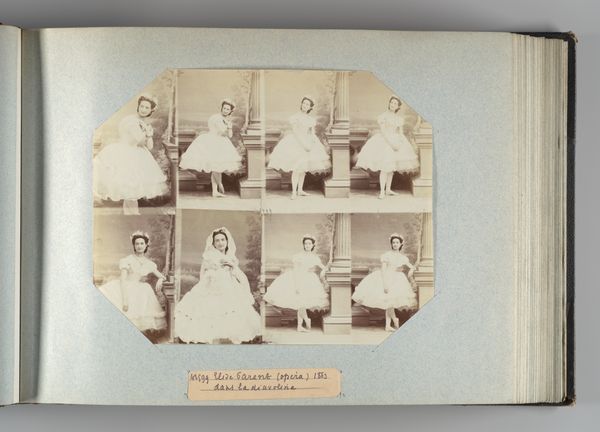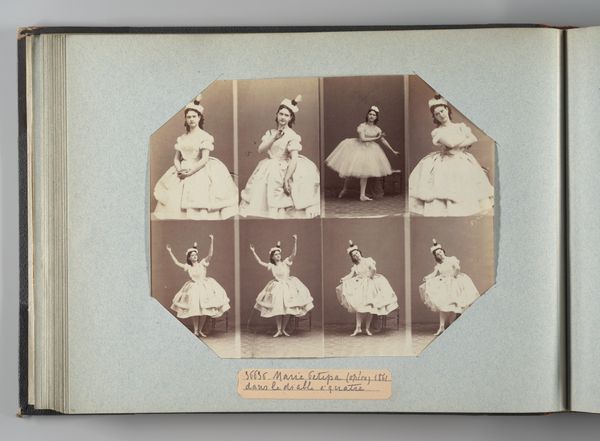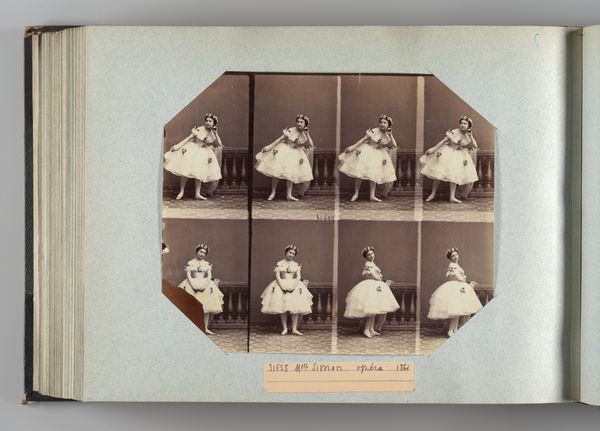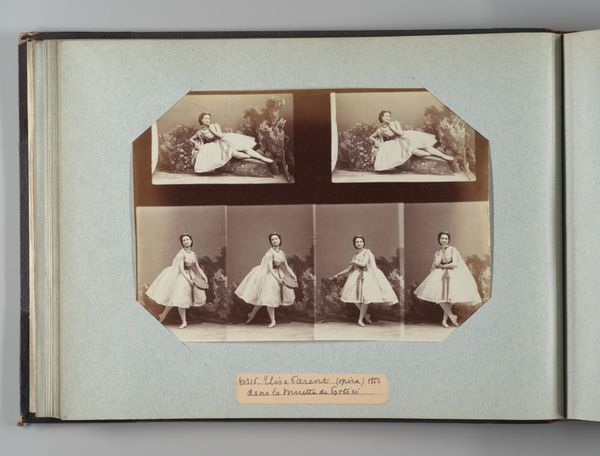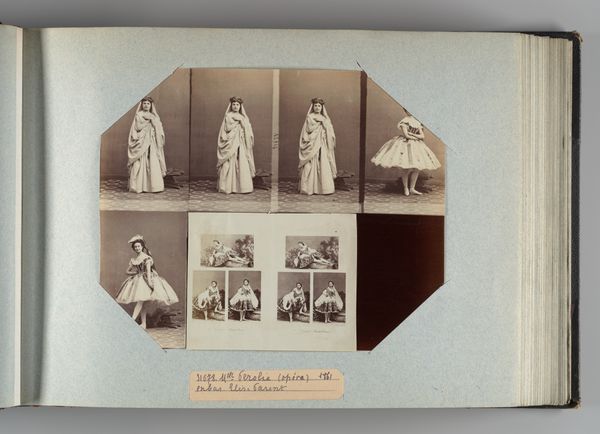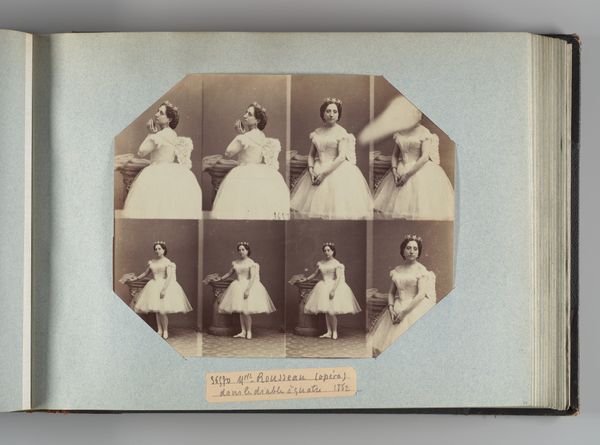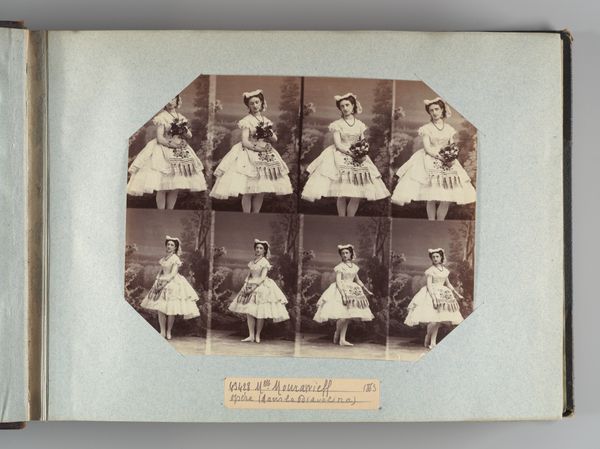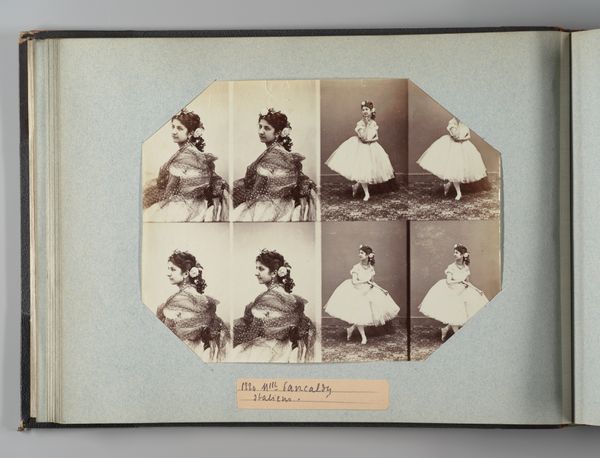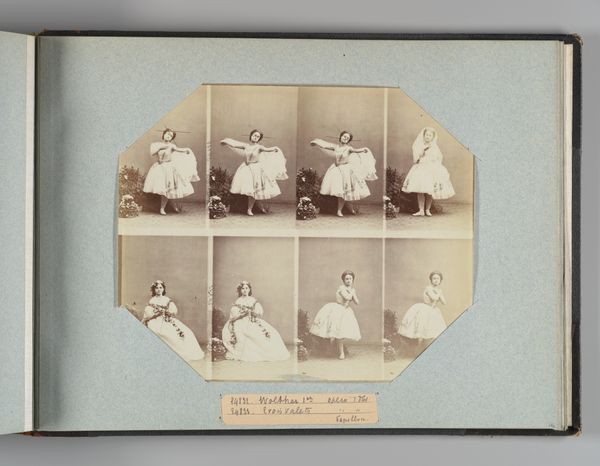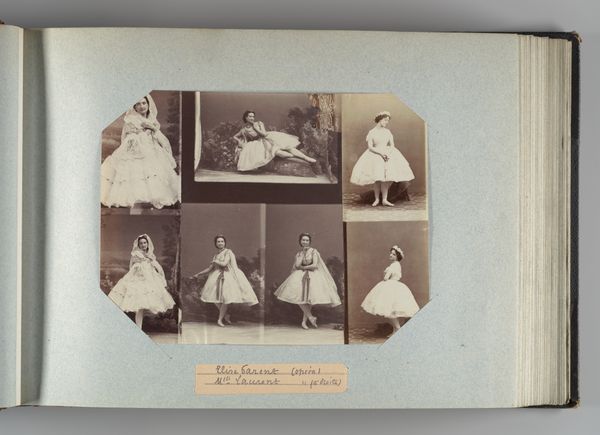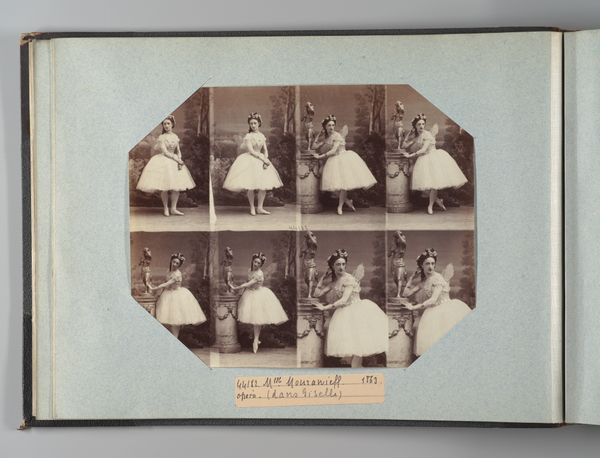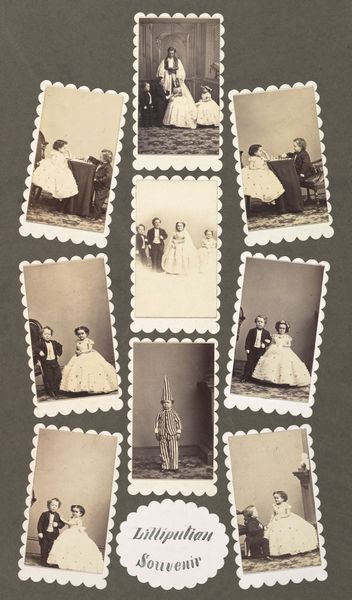
photography
#
portrait
#
photography
Dimensions: Image: 7 3/8 × 9 1/4 in. (18.8 × 23.5 cm) Album page: 10 3/8 × 13 3/4 in. (26.3 × 35 cm)
Copyright: Public Domain
Curator: Looking at "Elise Piron," an 1865 photograph by André-Adolphe-Eugène Disdéri, I’m immediately struck by its seemingly simple premise: eight portraits of a young woman in a white tutu, posed in what appears to be a ballet stance. Editor: It feels almost... clinical, doesn't it? A grid of similar images. Despite the soft sepia tones, there's a detached feeling, as if the subject is being presented for scrutiny rather than celebrated for artistry. There is some elegance in those poses, and in her eyes. Curator: Indeed. The photograph, part of the Met's collection, falls within a broader trend of 19th-century celebrity portraiture. Ballerinas were among the first international superstars, and this image highlights the social construction of fame through image production. Who was allowed access and on what terms. Editor: So, the gaze is not just appreciative; it's potentially objectifying. Do you think the multiple exposures are intended to give us a comprehensive view, almost a 360-degree assessment, fitting with prevailing societal norms around surveillance, propriety and ideal bodies at the time? Is Disdéri marketing? Curator: Absolutely. Consider the historical context of ballet as an art form increasingly popular among the burgeoning middle class. Photography democratized access to these stars, disseminating images previously limited to the elite circles of theater patrons. Editor: It's unsettling how that democratisation mirrors access to a kind of dehumanization. She is there, but simultaneously presented as something less than a real person, which arguably is still a contemporary discourse around dance performance as a career choice. But there is something hopeful there, perhaps, if we can interrogate the conditions and power structures. Curator: Precisely! I mean it is also that she is very stylish. And style and portraiture serve as tools of identity construction for marginalised communities and as vehicles for personal and collective empowerment. Editor: The conversation around this portrait reveals so much. There's the romanticized ideal of ballet juxtaposed against the commercialization of the artist and potential for exploitation. Thanks. Curator: Thank you. It's important to remember these visual conversations from the past offer critical reflections on our present values.
Comments
No comments
Be the first to comment and join the conversation on the ultimate creative platform.
